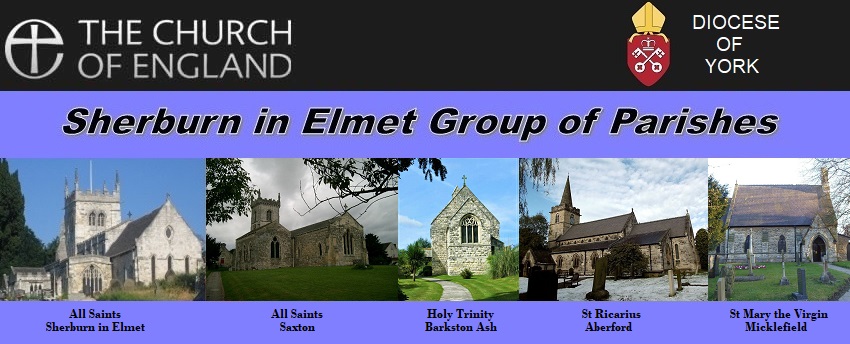 When Athelstan (c. 895-939), first King of all England, defeated the Danes at Brunanburg in 938, he gave the manors of Sherburn and Cawood to the Archbishop of York as a thank-offering. The King had founded a manor house on a site immediately to the north of the church, and Sherburn became a seat of the archbishops of York from this time until the middle of the 14th century. This explains the ecclesiastical importance and relative wealth of the original church (see below) and the exceptional size of the present church for its period.
When Athelstan (c. 895-939), first King of all England, defeated the Danes at Brunanburg in 938, he gave the manors of Sherburn and Cawood to the Archbishop of York as a thank-offering. The King had founded a manor house on a site immediately to the north of the church, and Sherburn became a seat of the archbishops of York from this time until the middle of the 14th century. This explains the ecclesiastical importance and relative wealth of the original church (see below) and the exceptional size of the present church for its period.
Archbishop Walter de Gray (1215-1255) seems to have showed most interest in Sherburn as village and residence. As well as granting the town a ‘charter of liberties’, he obtained from King Henry III the charter for a weekly market on Wednesdays (still market day) in 1223 and the grant of an annual two-day fair in September. Other archbishops tended to favour their fortified palace at Cawood, and the manor house at Sherburn fell into disrepair. In 1361 Archbishop John Thoresby (1352-1373) approved the demolition of the manor house, enabling the stone to be reused in the construction of the eastern choir of York Minster. The fine quality of the stone, from nearby Huddlestone, persuaded the York chapter to take an
80-year lease on the quarry in 1385.
Sherburn had been from earliest times a town of some significance, effectively the ‘capital’ of the area, with Sherburn providing the mother church for many smaller chapels. For travellers making their way to York, or soldiers on the march, Sherburn must have seemed a civilised oasis in the heavily wooded district, interrupted only by rough paths and tiny hamlets.
In 1086 the Domesday commissioners established the rateable value of Sherburn at £34, while that of Leeds was only £7.
There is clear evidence that the Saxon church which preceded the present building was a building of exceptional significance for its time. A flyleaf appended to the York Gospels in about 1020 (dated by the style of script) offers an inventory of the church’s property in Anglo-Saxon.
 There is documentary evidence that this church survived the harrying of the north by William 1 after the Norman Conquest, but it was not large enough to meet the needs of a place as important as Sherburn then was, and between about 1100 and 1120 a fine Norman church was erected on the site. It consisted of an oblong nave and north and south aisles, all under a single, deeply pitched roof, with an apsidal sanctuary at the east end of the nave, and an apse at the end of each aisle (a balsa wood model in the south aisle illustrates how the church must have appeared externally). With its very low eaves it must have been rather like a huge tithe barn and very dark inside. This building is the direct ancestor of the present church, and although the church has been much modified and extended over the centuries, the oldest parts - the nave arcade and the lower part of the north aisle wall - have survived unaltered.
There is documentary evidence that this church survived the harrying of the north by William 1 after the Norman Conquest, but it was not large enough to meet the needs of a place as important as Sherburn then was, and between about 1100 and 1120 a fine Norman church was erected on the site. It consisted of an oblong nave and north and south aisles, all under a single, deeply pitched roof, with an apsidal sanctuary at the east end of the nave, and an apse at the end of each aisle (a balsa wood model in the south aisle illustrates how the church must have appeared externally). With its very low eaves it must have been rather like a huge tithe barn and very dark inside. This building is the direct ancestor of the present church, and although the church has been much modified and extended over the centuries, the oldest parts - the nave arcade and the lower part of the north aisle wall - have survived unaltered.
